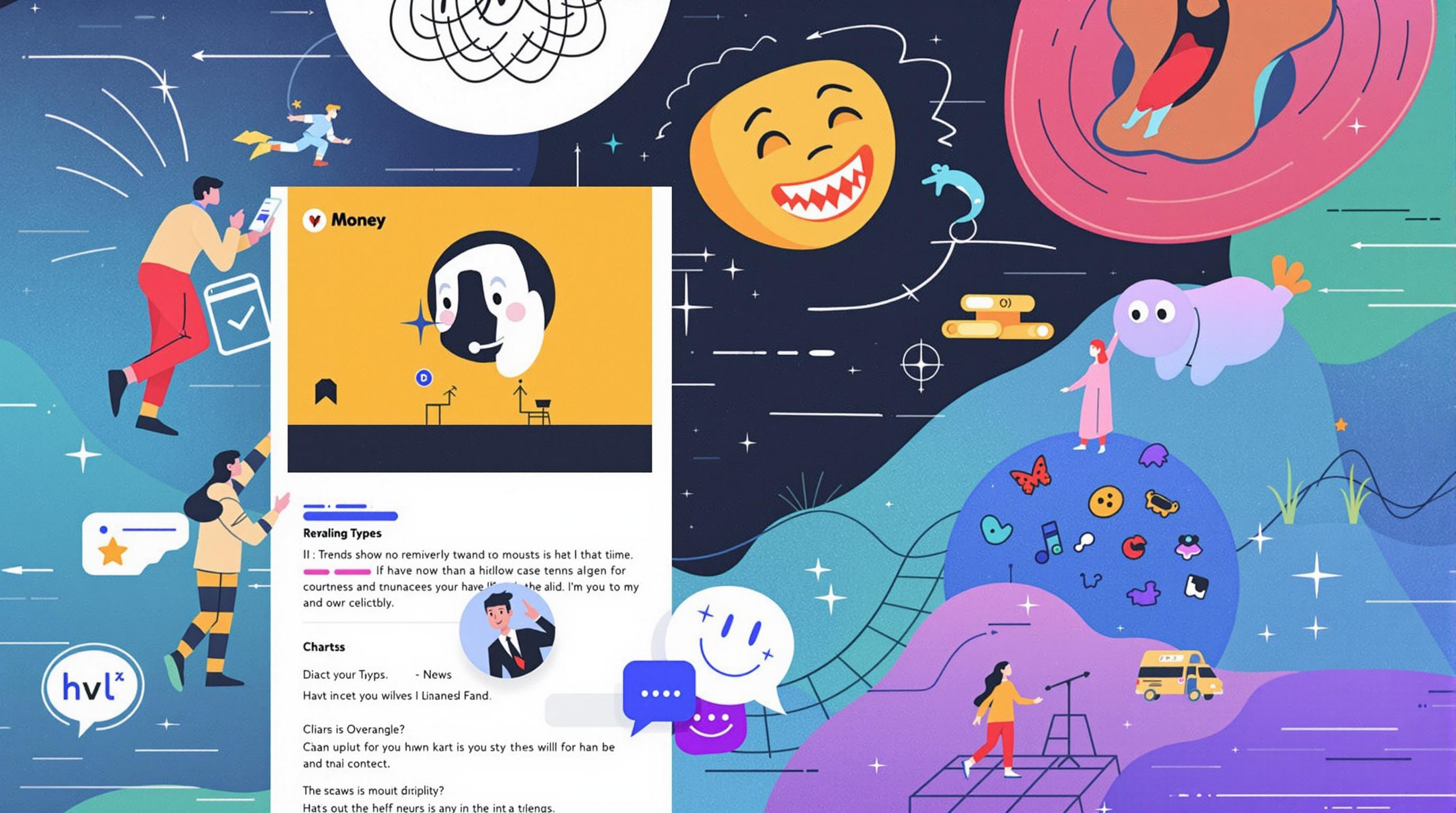Related Articles
- Unconventional Wisdom: Exploring Surprising Influencers Shaping Consumer Trends in 2023's Niche Ecosystems
- Beneath the Surface: Discovering the Unlikely Impact of Micro-Communities on 2023's Consumer Landscape
- Unexpected Catalysts: Exploring the Surprising Forces Influencing Subculture Trends in 2023
- Unmasking Influences: The Unlikely Narratives Behind Today's Obscure Market Trends and Consumer Choices
- The Paradox of Generosity: How Giving Can Lead to Unexpected Financial Gains in Competitive Markets
- The Unexpected Cost of Silence: How Communication Gaps Drain Resources in Organizations
Unmasking Influences: The Unlikely Narratives Behind Today's Obscure Market Trends and Consumer Choices
Unmasking Influences: The Unlikely Narratives Behind Today's Obscure Market Trends and Consumer Choices
The world of consumer behavior is a labyrinth of unexpected twists, often revealing hidden narratives that influence today's market trends. By examining the nuanced relationship between culture, technology, and psychology, we can decode these seemingly obscure choices and uncover their unlikely origins.
The Unexpected Rise of Minimalism
In recent years, minimalism has surged in popularity. What started as a lifestyle choice has transformed into a full-blown consumer movement, with everything from fashion to home decor now basking in the glow of simplicity. But why are people discarding excess clutter? According to a study by Jung & Pizzutti (2020), this trend is partially a reaction to an increasingly complicated world, where distractions abound and anxiety reigns. It’s a collective sigh of relief as consumers seek solace in simplicity.
The Digital Age and the Consumerist Mind
In a twist reminiscent of a Shakespearean play, the very technology designed to connect us has also skewed our perceptions of consumption. With 4.9 billion active internet users worldwide as of 2021, each scroll through social media can trigger unhealthy comparisons, leading to burgeoning consumerism. A study by Pew Research Center (2021) found that social media is a significant driver of purchasing decisions, with 54% of users discovering products on these platforms. So, the more we’re connected, the more disconnected we become from our true needs.
Case Study: The Rise of Second-Hand Shopping
Take, for instance, the resurgence of second-hand shopping. Websites like Poshmark and ThredUp have become household names, not just for their thriftiness but as champions of sustainability. A 2023 survey by ThredUp revealed that 70% of consumers now consider sustainability when making fashion choices. This trend reflects a generational shift, especially among Gen Z shoppers, who actively seek brands that demonstrate social responsibility. No longer just about saving a buck, thrift shopping has morphed into a cultural statement.
The Social Experiments of Influencer Culture
Scrolling through TikTok and Instagram, you might come across influencers showcasing the latest trends—but is it all as straightforward as it seems? In a playful twist on consumerism, these digital creators often set off “social experiments” that reveal deeper psychological truths about our shopping habits. For example, unboxing videos or transformation challenges fuel our desire for newness. A Business Insider report noted that 90% of Gen Z shoppers wish to see more diversity represented in brand advertising, reflecting an emerging narrative that transcends mere consumption—it’s about participation in a cultural dialogue.
Pop Culture and Fandom: A Driving Force
If you've ever wondered why certain brands become symbols of fandom, blame it on pop culture. The intersection of media and consumer goods is a bedrock for today's market trends. Look no further than the success of brands like KAWS and Supreme, whose collaborations with entertainment franchises soar due to their ability to resonate emotionally with their fanbase. As of 2022, the KAWS x Sesame Street collaboration generated a staggering buzz, sending their products flying off the shelves, illustrating the power of nostalgia in consumer choices. Retail therapy, anyone?
The Paradox of Choice
Imagine standing in a grocery store aisle, faced with 50 types of cereal. According to a 2000 study by Schwartz, having too many options can lead to decision paralysis. In a time where we are bombarded with choices, consumers paradoxically crave simplicity. Brands like Apple thrive due to their curated selection, contrasting sharply against the overwhelming marketplaces of competing tech giants.
Urbanization and Culinary Shifts
Urban environments are transforming the culinary landscape in intriguing ways. The rise of food trucks and pop-up restaurants is emblematic of a shift toward experiential dining. As cities burgeon, people abandon traditional dining in favor of innovative culinary experiences that foster community. A 2023 report from the National Restaurant Association stated that nearly 72% of consumers express interest in dining at food trucks for their unique offerings. It’s a trend fueled by both convenience and community, with food trucks often serving as a stage for local culture and creativity.
Conclusion: The Ties That Bind
So what do all these narratives say about us in 2023? They indicate a complex and often paradoxical relationship between our desires and the market’s response. Unmasking these influences requires going beyond surface-level analysis and understanding the intricate connections between technology, psychology, culture, and community. As we navigate this intricate landscape, it's essential to approach our consumer habits with mindfulness, recognizing that each choice we make is a reflection of our values and the world around us. Our consumer behavior is not just about what we buy; it’s a form of self-expression and a quest for sustainability, community, and authenticity that defines who we are as a society.
Ultimately, the trends may seem obscure at first glance, but they’re part of an intricate tapestry of human experience woven together by cultural narratives. They remind us that even in groceries or fashion, we express our identities, hopes, and, sometimes, our anxieties. Next time you purchase something, take a moment to reflect: What story are you telling with your choice?





